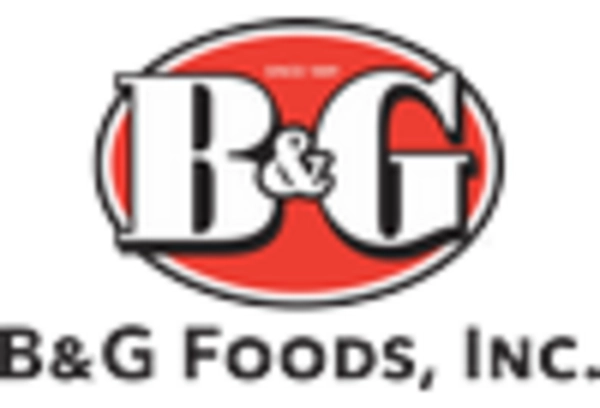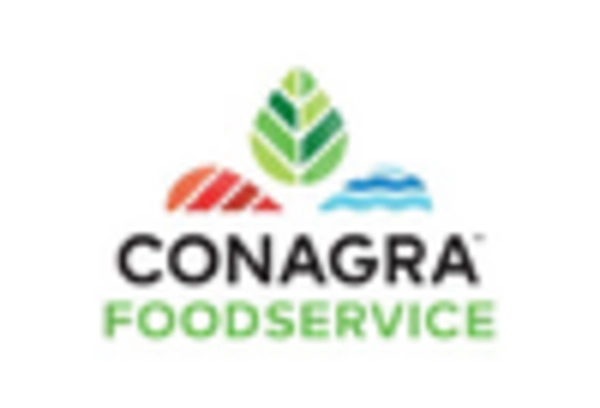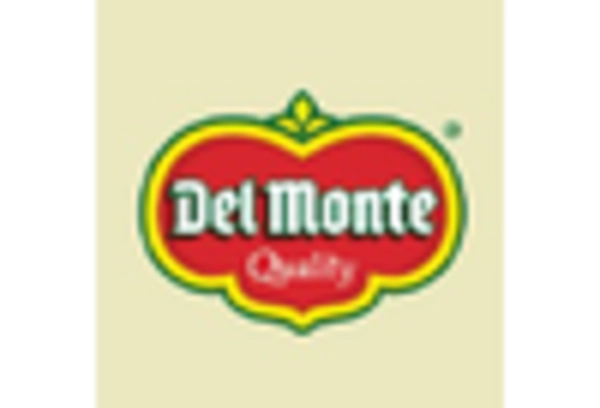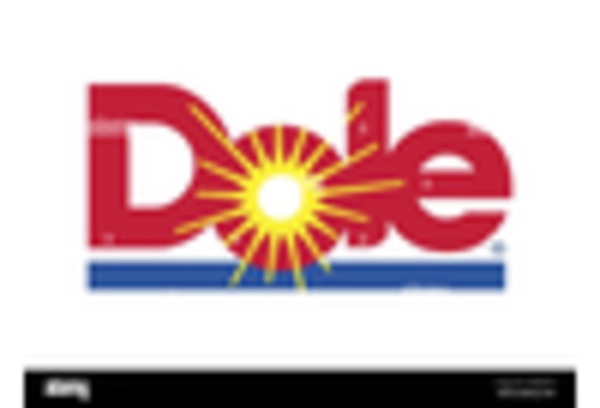Growth of E-commerce Platforms
The growth of e-commerce platforms is significantly influencing the Concentrated Tomatoes Market. As online shopping becomes increasingly popular, consumers are turning to digital channels for their grocery needs, including concentrated tomato products. Recent data suggests that online grocery sales are projected to grow by over 20% in the coming years, indicating a shift in consumer purchasing behavior. This trend presents an opportunity for manufacturers and retailers in the Concentrated Tomatoes Market to expand their online presence and reach a broader audience. By leveraging e-commerce, companies can offer a wider variety of products and cater to the preferences of tech-savvy consumers, potentially driving sales and enhancing brand loyalty.
Expansion of Food Service Sector
The expansion of the food service sector plays a crucial role in driving the Concentrated Tomatoes Market. With the rise of restaurants, cafes, and catering services, there is a heightened demand for high-quality ingredients, including concentrated tomatoes. Recent statistics indicate that the food service industry is expected to witness a growth rate of around 5% annually, which could significantly impact the consumption of concentrated tomato products. As chefs and food service operators increasingly prioritize flavor and quality, concentrated tomatoes are favored for their rich taste and ease of use. This trend suggests that the Concentrated Tomatoes Market may experience a robust increase in sales as food service establishments incorporate these products into their menus, thereby enhancing culinary offerings and customer satisfaction.
Rising Demand for Processed Foods
The increasing demand for processed foods is a pivotal driver in the Concentrated Tomatoes Market. As consumers seek convenience and time-saving solutions, the preference for ready-to-use tomato products has surged. According to recent data, the processed food sector is projected to grow at a compound annual growth rate of approximately 4.5% over the next five years. This trend is likely to bolster the demand for concentrated tomatoes, which serve as essential ingredients in various culinary applications. The versatility of concentrated tomatoes in sauces, soups, and other dishes further enhances their appeal, making them a staple in many households. Consequently, manufacturers in the Concentrated Tomatoes Market are adapting their product lines to meet this growing consumer preference, potentially leading to increased market share and profitability.
Innovations in Packaging Technology
Innovations in packaging technology are emerging as a vital driver in the Concentrated Tomatoes Market. Enhanced packaging solutions not only improve product shelf life but also cater to the growing consumer demand for convenience. Recent advancements, such as vacuum-sealed pouches and eco-friendly materials, are gaining traction among manufacturers. These innovations are likely to attract environmentally conscious consumers, thereby expanding the market reach. Furthermore, the ability to offer single-serve packaging options aligns with the trend towards portion control and reduces food waste. As a result, companies in the Concentrated Tomatoes Market are investing in research and development to create packaging that meets these evolving consumer preferences, potentially leading to increased sales and market penetration.
Increasing Popularity of Mediterranean Cuisine
The increasing popularity of Mediterranean cuisine serves as a significant driver in the Concentrated Tomatoes Market. As consumers become more adventurous in their culinary choices, the demand for authentic Mediterranean dishes, which often utilize concentrated tomatoes, is on the rise. Recent surveys indicate that Mediterranean food is among the fastest-growing segments in the restaurant industry, with a projected growth rate of approximately 6% annually. This trend is likely to encourage both home cooks and professional chefs to incorporate concentrated tomatoes into their recipes, thereby boosting sales in the Concentrated Tomatoes Market. The rich flavors and health benefits associated with Mediterranean cuisine further enhance the appeal of concentrated tomato products, suggesting a promising outlook for market growth.


















Leave a Comment